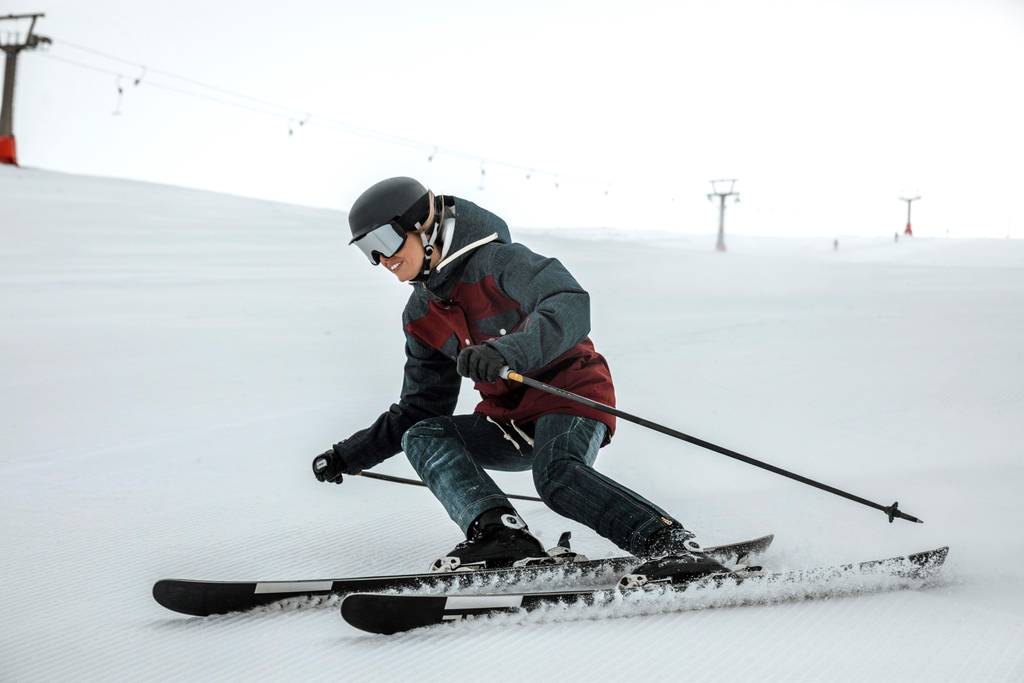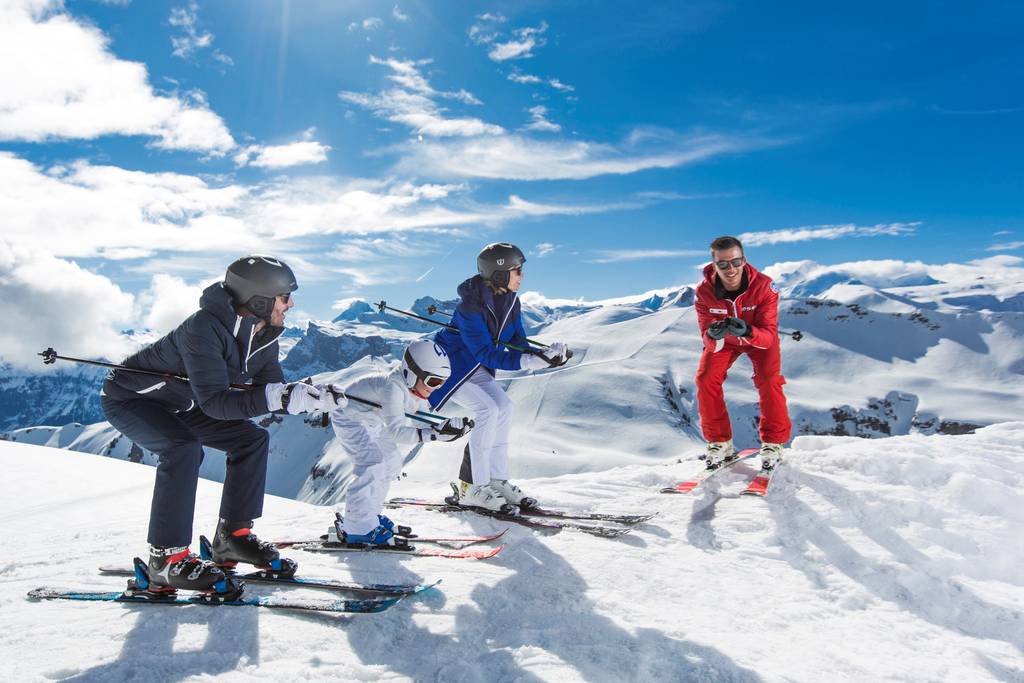There are a few different types of ski stances to know, which will depend on your speed, direction, and more. However, you should know and practice all of these because you never know when they might come in handy.
Straightforward Stance
When taking into consideration the direction of travel and the steepness of the slope, going straight down often requires you to adopt a straightforward stance. The ski will be parallel to the slopes and at the same height, the stance becomes pretty simple.
To do the straightforward stance, make sure your skis are hip-width apart and that you have distributed equal weight across each ski. Bend your knees to absorb bumps and lean your body slightly forward so that your weight is over the middle of the skis.
You should have your arms out to the side, your elbows slightly bent, and your poles behind you. How much you lean forward will change depending on the steepness of the slope, but your centre of gravity should be over the middle of the skis.
As the gradient slowly decreases, you will have to lean forward to keep your weight the same. If you don’t lean forward, your weight will cause you to have less control over your skis.
Traversing Stance
If you’re going across the slopes and are leaning over, your downhill ski or the outside ski will likely be lower than the uphill or inside ski. When you’re wearing all of your ski gear and your ski boots, you likely won’t be able to move your ankles much. That means the only way to make one ski higher than the other is by bringing the inside or uphill knee forward.
Once you do that, your uphill or inside ski will be slightly in front of the downhill or outside ski. The more you lean over or the bigger the steepness, the further away the downhill ski will be.
To stay balanced and maintain the traversing ski stance, you should keep the skis hip-width apart when going across the slope. However, if you’re leaning over, your skis will get further apart.
Again, you should keep your knees bent to absorb bumps and leave enough movement in the legs to roll your knees.
When it comes to your upper body, the position you’re in, with feet one in front of the other, should allow your body to easily be moved. With your shoulders in line with your feet, not looking at your skis, you’ll gain flexibility and comfort.
For the traversing stance, you will need to position your upper body so that your weight is transferred to the downhill or outside ski.
Leant Over Stance
When leaning over, you have to move the body the same as you did for the traversing stance, but with one key difference. Your weight has to be transferred into the outside ski through the resultant force from gravity and the turning force.
When carving, your body shouldn’t be twisted to the side because you’re travelling in the same direction as the skis. You should bring your shoulders flat in the direction of the skis. That way, you’ll be looking down the length of the skis.




